April 2012 will see Howard Jones perform his first two albums ‘Human’s Lib’ and ‘Dream Into Action’ in their entirety on a nationwide UK tour following a successful premiere at London’s IndigO2 in November 2010.
That event was captured for prosperity and is now available as a 2-disc DVD set via his website. Throughout the DVD, the sound reproduction is excellent while Howard engages with his audience and delivers a superlative performance while in charge of his Roland Fantom G8 and Jupiter 8.
One of the bonus features is the VIP soundcheck where Howard gives a fascinating synth masterclass in how the different audio aspects were put together. On this new tour, Howard will again be augmented by Robbie Bronnimann on keyboards/sequencing and Jonathan Atkinson on electronic percussion. As can be seen on the DVD, the show promises vintage synth sounds and cutting edge technology combined with thoughtfully crafted live visuals
It was in 1983 when Howard Jones first became known via his support slots with CHINA CRISIS and OMD. At the time, he had also recorded a warmly received BBC Radio1 session for David ‘Kid’ Jensen which featured prototype versions of ‘New Song’, ‘Human’s Lib’ and ‘Natural’ plus ‘Don’t Put These Curses On Me’, a track that didn’t see an official release until his 2003 Very Best Of collection.
A classically trained musician who spent two and a half years at the Royal Northern College Of Music in Manchester, he used sequencers live on stage whilst playing and singing simultaneously in a type of one man synth act that previously only Thomas Dolby had attempted. His debut album ‘Human’s Lib’ was released in March 1984 and went straight in at No1 in the UK charts. The follow-up ‘Dream Into Action’ came out a year later and although missed the UK top slot by one, its final single ‘No One Is To Blame’ became an American Adult Contemporary Chart No1 in re-recorded form with production assistance from Phil Collins.
This period could be described as Howard Jones’ imperial phase, a time when his singles ‘New Song’, ‘What Is Love?’, ‘Pearl In The Shell’, ‘Hide And Seek’, ‘Like To Get To Know You Well’, ‘Look Mama’, ‘Things Can Only Get Better’ and ‘Life In One Day’ were charting in Germany, Italy, Sweden, Canada and Australia.
ELECTRICITYCLUB.CO.UK had the pleasure of chatting to Howard Jones about his upcoming tour and in particular, the years between 1983-85 when he became a household name and many people’s entry into the world of synthpop.
You have this live DVD out of when you debuted ‘Human’s Lib’ and ‘Dream Into Action’ at IndigO2 last year. What are your stand out memories from the night?
At the time, it was only going to be a one-off and it was two and a half hours of music *laughs*
So I was absolutely at the limit of my capacity to remember everything. Everyone pulled it off and it went really well. I was a little nervous whether I could get through the whole night but it was good. I was very pleased with the videos which we had on this huge LCD screen behind us. They worked really well in sync with the music.
It obviously went well enough for you to do this forthcoming tour in April. But one thing that intrigues me about these classic album shows is what goes through an artist’s mind with regards choosing the running order?
We’ve just done this show in America so I did ‘Human’s Lib’ first, then ‘Dream Into Action’ as ‘Dream Into Action’ was the biggest album for me in the States. But in the UK, it was ‘Dream Into Action’ first, then ‘Human’s Lib’.
I chose the order of the songs based on what works live because if I stuck to the album order, you’d have all the hits like ‘What Is Love?’ and ‘Pearl In The Shell’ first and then the much more obscure tracks at the end of the show, I didn’t think that would work *laughs*
So I’ve just chosen the songs based on the forward momentum of the tracks.
What about musically, like whether you tinker with the sounds or the arrangements?
What I decided to do with all the big hits sound wise, we’ve recreated exactly what it was on the album but I’ve changed the structure a bit to allow for audience participation. But with all other tracks, we’ve stuck exactly to what it was on the albums. It’s strictly like it was because I think that’s what people want.
Is there anything technically that you’re changing now you’re going to take this show out on tour?
I’m using in-ear monitors because it’s always so difficult to hear things, so we’ve changed that.
I’m going to add some MIDI harmonies that I’m generating live and we’ve changed the drum kit now to a more portable electronic drum kit that fits into a case. That works much better. And I’m thinking about having my Yamaha KX5 chromed so it looks a bit more flashy! *laughs*
Are you taking any vintage gear with you?
No. At the IndigO2, I had my Jupiter 8 which for one gig is fine. But to take it on the road, it’s just too precious. And if it goes wrong, there’s nobody there to fix it. I’ve got to be practical so I’ve got a software version of the Jupiter which works really well and is very reliable. I’ve had my Jupiter next to the software version and I’ve tweaked the sounds so that it’s exactly what it should be.
What first inspired you to actually get a synthesizer?
I always wanted to get into synths because I saw ELP’s Keith Emerson with his big Modular Moog. Hearing that when I was fourteen at the Isle Of Wight Festival, it was so exciting to hear those sounds but there was no way I could afford anything like that until I had a job. By then, the Moog Prodigy was available so I went up to London and bought one.
By some bizarre mistake, they delivered another one to my house so I had two Moogs – I used one for bass and one for leadline. Somebody gave me a really old primitive drum machine, a Bentley Rhythm Ace which was made by Roland. I had a Fender Rhodes electric piano as well so I started to develop this idea of a proper one man electronic show. I kept upgrading, I got a CR78 and then a TR808. Then I got a Pro-One which had a sequencer in it. Gradually, it started to evolve into quite a big rig and made a hell of a racket!
Your first live breaks were supporting CHINA CRISIS and OMD in 1983 before ‘Human’s Lib’ came out. What was your live equipment set-up at this point?
At that stage, it was the two Moogs, a Juno 60 which did arpeggios and pads; I had the Pro-One which could only do eight notes which I had to programme in before every song! And I had the TR808. I was able to take the Prodigy off its stand and put it round my neck so it was like a primitive mobile keyboard, a bit heavy but it worked!
You did rather well on that CHINA CRISIS tour; I saw you at the London Lyceum gig and you’re still the only support act I’ve ever seen get an encore!
I have so much affection for that tour, it was the making of me. We were staying in the cheapest bed and breakfasts we could find, it was absolutely on a shoestring that tour. You got the feeling it was going to work and there was a future. It was just the timing. CHINA CRISIS are still one of my favourite bands, I absolutely adore their music.
But I was on a roll at the time, I was just at the point where I was going to be signed. In fact, at that Lyceum gig, there was a contract by Stiff Records on the table. I’d been waiting all my life to sign a record deal but I didn’t sign it because the guy who wanted me was going to Warners so I signed with them instead! That was a big night.
I did feel a bit sorry for CHINA CRISIS because I was a tough act to follow on that tour. It was just everything was going my way; I’d just done a Radio1 session and there was a huge momentum. I was so fired up because that was the first time I’d had a proper big audience to play to and it was very exciting. I’m still really good friends with CHINA CRISIS, I’m very close to them.
How was the OMD tour?
I didn’t do so many gigs with them, I seem to remember it was only two or three. It was great to be on the bill with them because I used to do a cover of ‘Enola Gay’ live, it was one of my favourite tracks. It was also one of the few covers I ever did so I have a lot of affection for OMD and it was great to be opening up for them.
I understand you introduced OMD to the Roland Jupiter 8?
Did I? I didn’t know that! That’s a bit of trivia I didn’t know! *laughs*
Yes, they bought one for ‘Junk Culture’ which was the album they were working on at the time of that tour…
I think I’d signed a deal by then so I could afford one, but they were so expensive! They were like £4000 and that was hell of a lot of money at that time for anybody!
It seems to be the synth most associated with you because of the ‘New Song’ sleeve. Is it your favourite?
It’s absolutely my favourite synth. Nothing sounds like it. And it’s so easy to programme, everything’s laid out in front of you and you can quickly get the sounds up. Although I’m using the Arturia synth software, you can’t recreate that stereo that the Jupiter has. I’ve been able to get the sounds close but not that wide stereo effect.
‘New Song’ as the first song released from ‘Human’s Lib’ and produced by the late Colin Thurston while the remainder of the album was produced by Rupert Hine. Why was that and how did their methods differ?
Warners wanted me in the studio as quick as possible to get something going and Colin was doing very well with DURAN DURAN and KAJAGOOGOO. So I started with him but it was quite convoluted, we did a first attempt at Chipping Norton Studio and the record company didn’t think it was quite right because the version I’d done for Radio1 was really great and quite simple. They wanted to get more of that feel into it and I think Ian Curnow (later of TALK TALK and PWL fame) helped out with some of the programming and tweaking.
So everyone thought it was right and it came out as a single. Max Hole who was A&R at Warners really thought the rest of the material I had would be much more suited to working with Rupert and Steven W Tayler. I think it was the right decision. And when I met Rupert, we got on so well and there was a kind of synergy there so I did both albums with him. There wasn’t any reason, I think Colin Thurston was just too busy working with other people, it was probably something like that!
So was ‘New Song’ inspired by Peter Gabriel’s ‘Solsbury Hill’?
No, there might have been a subconscious influence and I’ve always been a massive fan of Peter’s. It’s funny but sometimes when I do acoustic shows, I mash the two songs together! I never thought of it like that, but I can see what people mean… *sings first line of Solsbury Hill*
I mean there’s always something you can compare things to, but there was no conscious influence *laughs*
What were the main synth sounds on that?
The lead line of ‘New Song’ was on the Prodigy, but the organ sound came from the Juno 60.
‘Equality’ was one of the tracks that stood out. What’s the background behind that?
It was one of those that, like the other songs on ‘Human’s Lib’, was based on the limitations of the gear. So just to have a pumping eighth on the Pro-One was quite easy to do live, then to have a big riff and a simple chord change; it was one of those ones that really suited my live rig. Because it’s so empty, it was very powerful live.
Is that the slap bass from the Yamaha DX7?
Yes, I think we were one of the first people to get a DX7 and record it. The bassline of ‘What Is Love?’ is DX7. The DX7 featured a lot on the first two albums because it was so different with the FM sound compared to analogue. It was great to get your hands on another synth that sounded different.
How did you find going digital?
Really, it was like a kid in a toy shop, “WOW, this is great, let’s use it!” – One of the things we did, especially on ‘Dream Into Action’ was layer up things a lot because MIDI was just getting going so you could connect up a lot of synths together and get this big complex sound with these different attacks and timbres. I used to use a Prophet T8 as well which had after touch and things as well. That was one of the difficulties with the show to recreate those complex sounds, you had to have all the elements and until I got the multi-tracks, I couldn’t work out exactly what I’d done. So that was a big part of putting this show together, unzipping all the layers.
I understand you tried the first Emulator at the time but weren’t impressed?
I didn’t like the Emulator I but the Emulator II, I did like. It was great and I started sampling my voice and using string samples. That became part of the whole thing as well. The only thing with it was that it was so slow, so everything was behind when you played it live. You couldn’t shift it like you can now with technology.
But you use the limitations of the instrument and get some interesting things going. Rupert and Steve had been sampling for a good couple of years so they were really on top of all that and they’d been using the AMS to do sampling, they were some of the first people to do that so it was great to have their expertise.
The title track ‘Human’s Lib’ was the story of a love triangle but that wasn’t always apparent to listeners unless they saw you play it live or heard the Radio1 session version with the extended intro and monologue? Do you still do that bit?
No… Ruth, David and Dennis!! That was fun at the time, I don’t do it now… maybe I should think about it again! *laughs*
You released the interim single ‘Like To Get To Know You Well’ in between the two albums and dedicated it to the original spirit of the Olympic Games. Why was that not on ‘Dream Into Action’ and will it get played in the show?
It was on the American version of ‘Dream Into Action’ – I always think of it as part of that era but it was written separately. It was one the record company had heard and they thought it would be a great single.
‘Dream Into Action’ reinforced your reputation. How did you feel you had improved as a songwriter, musician and arranger for that album?
‘Dream Into Action’ by necessity was written on the road because I’d used all my songs up on ‘Human’s Lib’. I was writing in dressing rooms on an Akai 12 track recorder set up for me everywhere I went. The songs were written on the road and when we went to the studio using whatever keyboards turned up, we were experimenting a lot so it’s a much more complex record. We used real brass, cello and backing vocals. The palette was extended so it’s more eclectic and diverse. There’s so many different things going on.
Were you challenged as a lyric writer because a fair number on the ‘Human’s Lib’ album were written by William Bryant?
Yes, I had to really develop that and become more confident with lyrics.
‘Elegy’ captured a type of fragile beauty that perhaps hadn’t been apparent on ‘Human’s Lib’?
I suppose I was trying to extend the emotional range I’d had with ‘Human’s Lib’. I was trying to stretch things and do more epic tracks. It’s always something I’ve tried to do as well as the pop stuff. I suppose there’s the influence of my classical background… it all comes out somewhere!
Synth technology was developing at a ferocious rate at that point?
I was just having a great time in the studio; all these amazing new synths turning up and it was like “what can I do with this?”. The way we used to work was that Steve Tayler would set up the desk so that I had all my keyboards coming through these huge wardrobe sized speakers.
So I would get in early at midday and they wouldn’t get in until much later, maybe 4 or 5pm. So I had most of the afternoon to experiment, but with it really loud. And when stuff is really loud, you simplify things because you don’t need so much. I think that was one of the reasons why some of the tracks sounded like they do.
The Prophet T8, DX7 and Emulator II were very much part of ‘Dream Into Action’ plus I was still using the Juno and Jupiter 8. They were often all MIDI-ed up together. I was using that Roland JSQ60 sequencer and when you overloaded it with too many notes, it would do weird things and I love it when stuff can’t cope with what you put in. *laughs*
Keyboards don’t tend to be like that anymore so a lot of weird sequence stuff came out of that like ‘Things Can Only Get Better’ and the middle eight of ‘Look Mama’ where it was all cascading.
How do you think ‘Human’s Lib’ and ‘Dream Into Action’ stand up today? And what are your own favourite tracks from your first two albums?
Since they’ve been remastered, they both sounding great. Obviously, they’re of their time and reflect where keyboards were then. My favourite track from ‘Human’s Lib’ is ‘Hide And Seek’, I think it’s become quite a classic for me and the most emotional, I’m really very proud of that. On ‘Dream Into Action’, ‘No One Is To Blame’ as a song and ‘Automaton’ as a piece of electronica of the time.
ELECTRICITYCLUB.CO.UK gives its warmest thanks to Howard Jones
Special thanks to Peter Noble at Noble PR
Howard Jones performs his albums ‘Human’s Lib’ and ‘Dream Into Action’
in the UK during April 2012, dates include:
Bristol O2 Academy (11 April), Sheffield O2 Academy (12 April), Liverpool O2 Academy (13 April), Birmingham O2 Academy (14 April), Newcastle O2 Academy (17 April), Glasgow O2 ABC (18 April), Bournemouth O2 Academy (20 April), London O2 Shepherds Bush Empire (21 April)
The new live DVD ‘Human’s Lib & Dream Into Action – Live at The IndigO2 London’ can be ordered from http://www.howardjones.com/shop.html
https://www.facebook.com/howardjones
https://twitter.com/howardjones
Text and Interview by Chi Ming Lai
11th December 2011

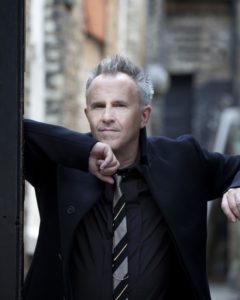
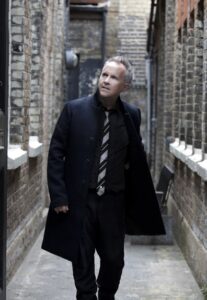
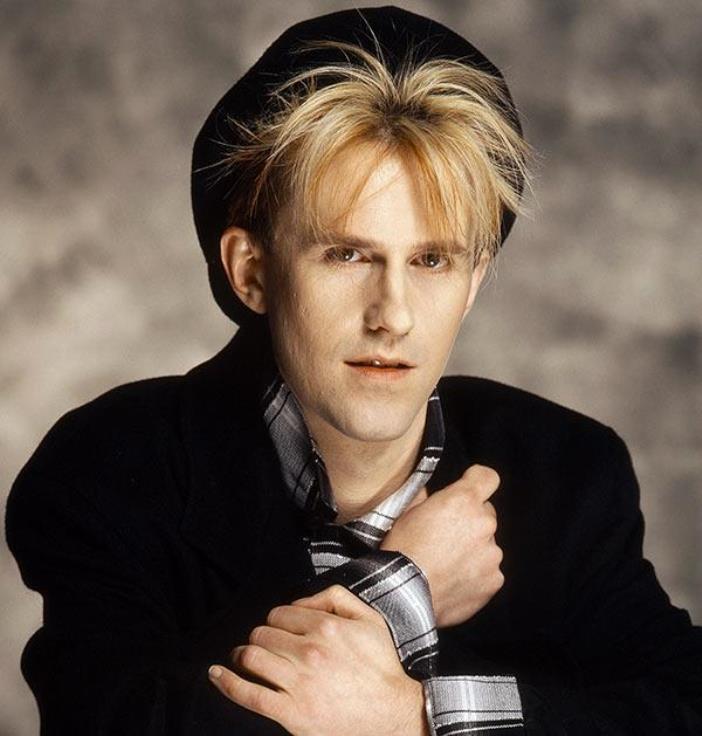
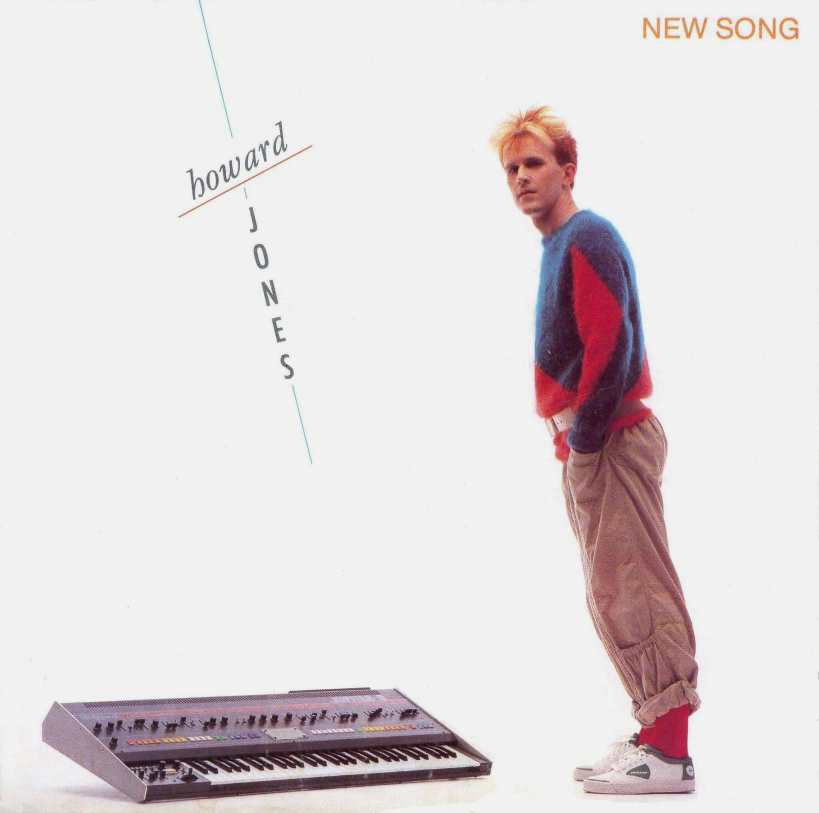
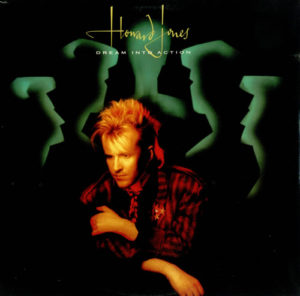
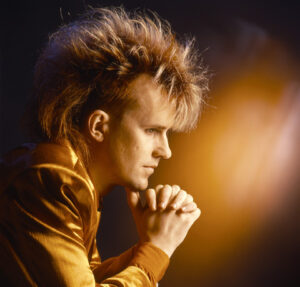
Follow Us!